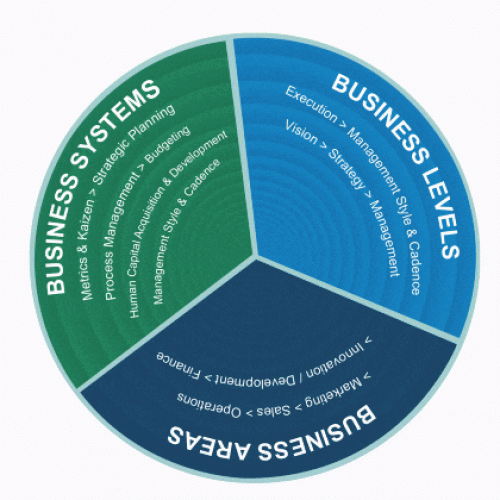Top 6 Growth Challenges for a Company Between $2M and $20M in Annual Sales
At this stage, the company has validated its market, built a core team, and achieved meaningful traction. The next challenge is preparing to scale up efficiently without breaking systems, burning too much cash, or losing control of culture. The focus shifts from survival to growth, systematisation, and attracting top talent & investors.
1. Moving from Scrappy Growth to Scalable, Repeatable Sales & Other Processes
- Challenge: The founder-led, hustle-driven sales approach that worked to get the company to $2M+ is no longer sustainable at scale.
- What’s needed:
- Build a scalable sales process with clearly defined roles for inbound, outbound, and account management. Often it is best to bring in an expert sales manager or a fractional Chief Sales Officer (CSO or VP of Sales level) to set up and then improve the sales process, training, compensation plans, and sales management systems.
- Develop a real sales leadership team—not just “hunters” but people who can create playbooks and drive predictable pipeline growth. Often you should be looking at additional distribution strategies, channels, and niches to expand the addressable market (tam(.
- Systematize demand generation, using paid acquisition, content marketing, SEO, and partnerships to fuel leads. Obviously, this depends on your product or service offering, but the idea is to build a throttle for lead generation with multiple sources and/or in multiple distribution channels or niches.
Since growth can and should be exponential, you are not just linearly adding salespeople or other sales resources; you looking to set up for sustainable 100%+ CAGR even though that $2M double will become a $4M double, then $8M.
2. Hiring & Developing a Mid-Level Management Layer (Without Bureaucracy)
- Challenge: The company is too big for founders to micromanage but too small for a full executive team. The biggest bottleneck is a lack of strong middle managers who can execute at a high level.
- What’s needed:
- Bring in experienced department managers who can scale their function without losing startup agility. This is usually needed in operations and marketing, as other areas are easier to grow without as much complexity. For example, accounting and product development will usually not grow proportionately to other areas.
- Avoid hiring just for experience—find leaders who fit the company’s culture and growth mindset. It is important to cement the culture that is appropriate for your industry and mix of employees. However, most management science is the same with people in any industry, with some adjustments along the spectrum of individual contributors at lower pay scales to more highly paid professionals that usually require less oversight. We teach creating a culture we call a Darwinian Meritocracy™. This is a culture that evolves with growth and external factors and has loads of discipline, clarity, communications, accountability and
Balance autonomy and accountability—leaders need freedom to execute but must be held to performance metrics. Generally, the more experience a person has, the more freedom you can give them, but certain guardrails are needed for everyone.
3. Infrastructure & Systems to Handle Growth Without Chaos
- Challenge: The company likely grew with duct-taped systems, spreadsheets, and hacks. These will break as volume increases.
- What’s needed:
- Automate and integrate key systems (CRM, finance, marketing, fulfilment, customer success). Often this is not real-time and done in batches, but it may be time to look at Enterprise Resource Planning and other broad integrated systems that share data across the organisation (i.e., NetSuite, Odo).
- Implement dashboards and KPIs to track performance and identify bottlenecks before they hurt growth.
- At this stage, every department should have a professionally designed dashboard and metrics for inputs and outputs for the major processes. This is one of the biggest bangs for the buck you will ever get because it sets the company up long-term for both managing people and constant improvement.
- Each metric (Key Performance Indicator, KPI) is owned by a manager or sometimes an individual. For example, if you make widgets, there are metrics for volume made per day or hour, total cost, some quality measurement, and others.
- This creates not just clarity and accountability but also the ability to detect trends, positive and negative, and adjust before they become a problem.
- Balance efficiency vs. flexibility—don’t over-engineer processes that slow innovation. A culture of constant innovation must be instilled, not rigidity. This allows people, processes, and other things to stretch as real growth happens. Intelligent managers that can do critical thinking will measure, adjust, and improve. No one can be a manager in a small, growing company that does not have this ability. Many people also lack forethought and creativity. The best managers have all three of these abilities.
4. Strengthening Unit Economics & Cash Flow Discipline
- Challenge: Revenue growth is great, but if margins and cash flow don’t improve, the company will struggle to scale profitably.
- What’s needed:
- Analyse Customer Acquisition Cost (CAC), Life Time Value (LTV), and Gross Margins—double down on profitable segments. A/B test marketing, that never ends.
- Ensure pricing and packaging align with scalable profitability. Margins can improve with volume.
- Build better financial planning and forecasting to prepare for capital needs.
Attracting & Retaining Top Talent in a Competitive Market
- Challenge: The company is competing with well-funded startups and established firms for top employees.
- What’s needed:
- Create a compelling employer brand—employees at this level want growth opportunities, not just a pay check. This is often enhanced by the ethos of the founder(s) and the vision, especially when it can have a positive impact on the world. This also means professional advancement and challenges, not just financial rewards.
- Develop a career path framework—employees need to see where they’re going long-term. Every employee should have a development plan updated quarterly. Company growth creates promotion opportunities, and the best people want this. So, you should sell it as part of the plan, culture, and opportunity. Growth can become a self-fulfilling prophecy because growth attracts the best people, and the best people will drive growth.
- Use equity and incentives to attract A-players without overpaying in cash. People with confidence in their abilities and vision appreciate equity. When people are not interested in this, I take it as a big negative on their motivation and commitment to a mission. You do not want managers that are just there for a salary. They will punch a clock, not be there in tough times, and when the extra hours are needed to pull ahead of competition. However, the mission needs to be explained in the interview process for them to get this piece.
6. Positioning for Strategic Investment & Expansion
- Challenge: Investors at this stage want proven growth, to understand the unit economics of the business (coming from the dashboard KPIs), operational efficiency, and a clear expansion roadmap. Institutional investors can now invest 7-figure and 8-figure amounts because much risk has been eliminated in stages one and two. The number of possible investors goes up by degrees of magnitude now because few investors want the risk of seed and series A investment where the failure rate can still be over eighty percent.
- What’s needed:
- Build a compelling growth story backed by data and traction. This can sell investors and senior people that understand business.
- Strengthen customer retention and engagement metrics—proving stickiness is critical. Work closely with customers to develop improvements and also references.
- Expand into new markets, geographies, or verticals while maintaining profitability. We teach a portfolio of niches market entry strategy because it allows you to establish multiple beachheads and still not go head-to-head against the large corporation with far more marketing resources.











